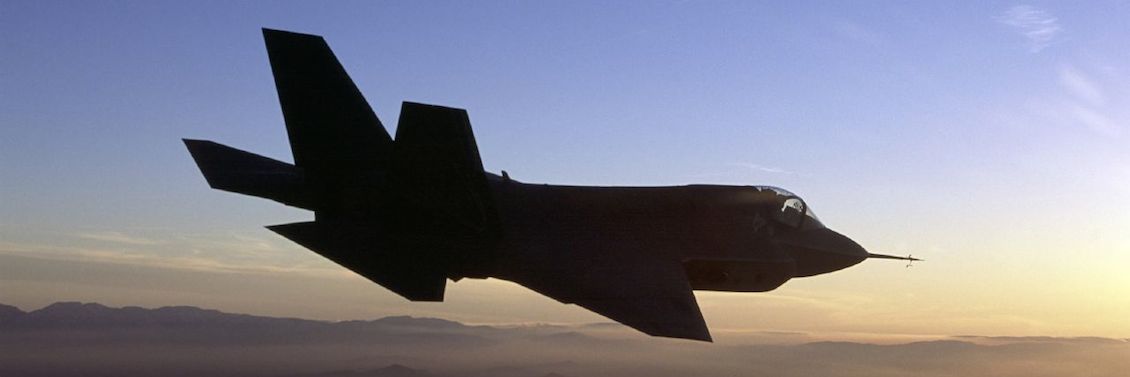Joint Strike Fighter (JSF) ready for take off

Source: Finmeccanica Magazine Aeronautics no.1
Over 3,000 planes on order for the nine partner nations and export potential for more than a thousand other aircraft.
:These are the initial prospects of the fifth generation Lockheed Martin F-35 Lightning II fighter bomber, better known as Joint Strike Fighter (JSF).Three different versions have been created from the same basic project – standard take off (F-35A), short take off and vertical landing (STOVL, F-35B) and carrier (F-35C) – each with highly structural, systematic and, above all, electronic conformity. The first two versions have been flying for some time while the third recently completed its inaugural flight. There will be no two-seater variant as this has been replaced by simulators.
The stealth reduces vulnerability and increases attack capacity while the complex technology being used inside the aircraft has been bound to the project from the very start. The same applies to logistic support as the plane must be easy to operate and deployable from the field, away from its permanent bases. This relates to a very important requirement as “away from base” is the main scenario hypothesized. The JSF is a single seat fighter capable of flying at supersonic speed that uses many new technologies, from the electronic scanning radar and sensors distributed throughout the whole aircraft, allowing the pilot to see what is happening behind him, to the capacity updates that have largely been applied to the new software as an alternative to replacing equipment.
The plane has a single engine, and gives the operators a choice between the Pratt & Whitney propellers mounted on the prototypes now flying, or the General Electric/Rolls-Royce currently under development. The vertical support system of the STOVL is based on a large fan mounted horizontally behind the pilot that is normally closed in by two large doors.
Italian Defence has expressed the possibility of replacing three different tactical lines of two Armed Forces with the JSF, which would be advantageous in terms of standardization and cost management. The communality with the United States and with Great Britain and other friendly nations has made a high level of interoperability possible, which translates to flexibility and savings. Starting in 2014, the Italian Air Force intends to first replace the AM-X fighter bombers (partially with the F-35B STOVL version) and than the Tornados. While the Marina will embark with the F-35B on the Cavour carriers as a replacement of the current AV-8BHarrier II. This choice has no alternative as no other fighter bomber in existence is compatible with the flight deck of the Italian flagship.
The Italian industrial presence in the programme includes many companies from the Finmeccanica Group, starting with Alenia Aeronautica, that will be responsible for managing the final assembly line created in Cameri, in the region of Novara. As the line in Cameri is the only Final Assembly & Check Out (FACO) line planned outside of the United States, it will be able to assemble Italian aircraft as well as that of other countries. Above all, the FACO has a strategic importance related to the technological contents of the JSF, whose knowledge is gradually growing as production of the components for the complete aircraft progresses. Once the production phase has come to an end, the facilities at Cameri will be turned into a centre for maintenance, repair, overhaul and upgrade (MRO&U) for the continental and Mediterranean area, with prospects in line with the scale of the programme and the long service expected. This Regional Support Center will be run by Alenia Aeronautica, in collaboration with the JSF Team thus contributing to provide stability to the industrial activities.
Alenia Aeronautica will produce around 1,200 series of wings, while SELEX Communications, SELEX Galileo, Oto Melara, Elsag Datamat and S3Log will produce components and subsystems. The construction of the primary components in the Alenia facilities at Nola (Naples) and Foggia began in 2009 and will eventually include the completed wings. The programme will involve numerous other companies, sometimes indirectly, with an invaluable overall impact resulting in thousands of jobs.
Strongly supported by the Italian Defence, who envisages in it the possibility of keeping pace with the armed forces of countries traditionally allied with Italy. The JSF will therefore become the tactical cornerstone of the Italian airforces, working alongside the Eurofighter, which will take care of aerial defense.

